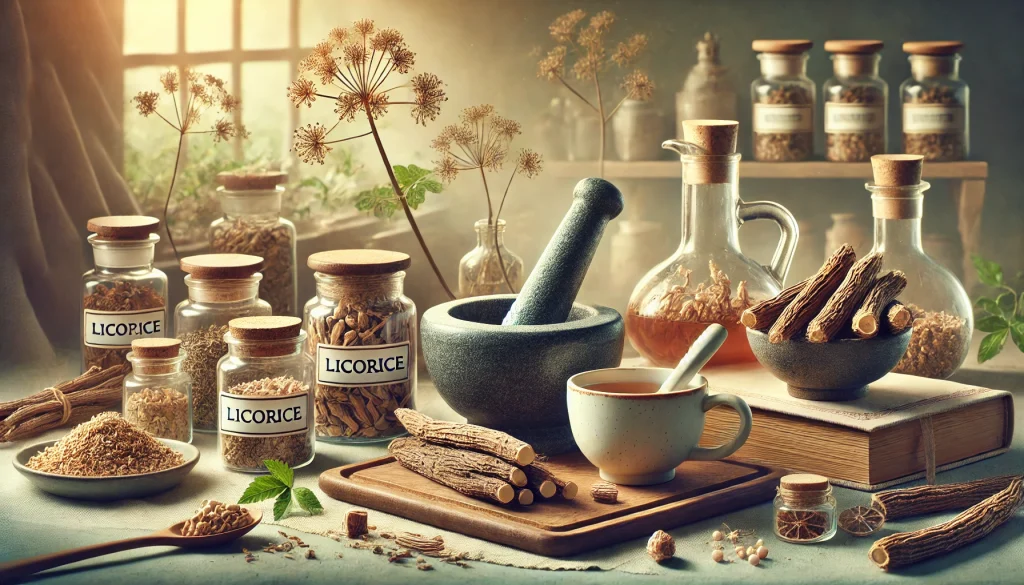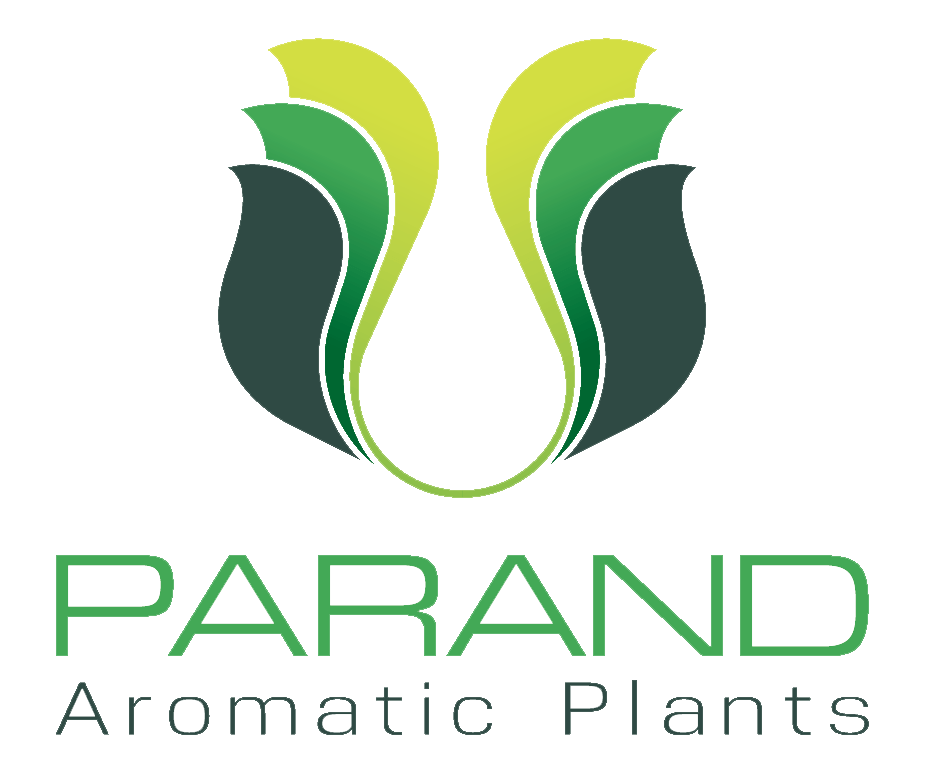Licorice root is a famous medicinal plant in traditional medicine with many therapeutic and antioxidant properties. This plant treats various diseases and issues such as ulcers, muscle spasms, swelling, bronchitis, rheumatism, and joint inflammation. Licorice as a natural and effective solution for these problems is recommended. In traditional medicine, licorice root has been used in wound healing, relieving cough, alleviating pain, and reducing stomach inflammation.
Application of Licorice in Traditional Medicine
- Muscle Spasm Treatment: The licorice plant is a natural anti-inflammatory and can help treat muscle spasms and muscle pain.
- Swelling: The antibacterial and anti-inflammatory properties of licorice can be effective in reducing swelling and related inflammation.
- Bronchitis: Using licorice as a natural expectorant can be beneficial in treating bronchitis and other respiratory problems.
- Rheumatism and Joint Swelling: The anti-inflammatory and antioxidant properties of licorice can help reduce inflammation and treat rheumatism and joint swelling.
The licorice root contains various compounds such as different sugars, flavonoids, sterols, amino acids, gum, starch, glucose, and sucrose (5-3%), asparagine, resin, coumarins, essential oils, and saponins. The major saponin in licorice is glycyrrhizic acid or glycyrrhizin. Glycyrrhizin is the sweet substance of this plant and is used in its pure form as a crystallized white powder. It is sparingly soluble in cold water and soluble in hot water. The solution foams when shaken. The sweetness of this substance is 50 to 60 times greater than sucrose. Glycyrrhizin is classified as a glycoside compound and through acid hydrolysis produces two molecules of glucuronic acid and one molecule of glycyrrhetinic acid. The latter substance is considered a pentacyclic triterpene compound and due to the hydrogenation state on the carbon 18, there is the possibility of α and β isomerism for glycyrrhetinic acid. The content of glycyrrhizin in dried roots is 6 to 12 percent. Additionally, compounds such as triterpene acids like glycyrrhizic acid and licoric acid belong to this group of compounds.
The flavonoids in licorice roots consist of flavone, flavonol, chalcone, isoflavone, isoflavon, isoflavan, and isoflavanone. Flavone includes liquiritin A and liquiritin B. Flavonol includes isoliquiritinol and liquiritinol. Chalcones consist of licochalcone A, licochalcone B, isoliquiritigenin, and isoliquiritin. Isoflavone includes liquoiriflavone A, liquoiriflavone B, glycyrrhizaflavone, and licoricon. Isoflavanones include liquoiriflavanone, glisaglabrin, and glabridin. The total amount of flavonoids in licorice root is approximately 1-1.5%.
Glycyrrhizin possesses saponin properties. It is easily tolerated orally, and the mucosal secretion characteristic of licorice extract is attributed to this compound. It has been reported that Glycyrrhizin serves as a carrier for various drugs used topically. Glycyrrhizin, with its anti-inflammatory and antiviral properties and other drugs, enhances their skin permeability. Glycyrrhetinic acid is an anti-inflammatory agent and indirectly inhibits the complete hepatic elimination of hydrocortisone, meaning it inhibits the removal of the side chain at carbon 17 of adrenal cortical hormones. Glycyrrhizic acid present in licorice promotes mucus production, improves gastric coverage, and enhances gastric blood flow, thereby aiding in the treatment of gastric ulcers. This active ingredient, by suppressing gastrin production in the body, prevents the development or exacerbation of gastric ulcers. Gastrin is a hormone that stimulates gastric acid production and can further exacerbate symptoms of peptic ulcers. Therefore, the use of licorice compounds can help improve gastric ulcer symptoms.
Glabridin is a type of isoflavonoid. This product is part of a larger family of plant molecules, natural phenols. Glabridin effectively inhibits platelet activation, so it may potentially become a therapeutic agent for thromboembolic disorders. This compound has antibacterial, antifungal, antioxidant, anti-inflammatory, and anticancer properties.
Sterols are a group of fatty compounds found in licorice plants. The common sterols found in licorice include campesterol, β-sitosterol, stigmasterol, and β-sitosterol. These sterols belong to the plant compound family and have many benefits for human health, such as reducing LDL cholesterol and increasing HDL cholesterol, reducing inflammation, maintaining skin health, and preserving cardiovascular health.

Licorice extract is a natural substance that has been used for centuries in traditional medicine and skincare. The benefits of licorice extract for the skin include:
- Brightening dark spots: Licorice extract contains glabridin, a compound that inhibits melanin production in the skin, which can help lighten dark spots and hyperpigmentation. The inhibition of melanin production by glabridin occurs through two different mechanisms. The first mechanism involves inhibiting the enzyme tyrosinase, which plays a role in the final stages of melanin production. This enzyme helps convert tyrosine to dihydroxyphenylalanine (DOPA) and then to dopachrome. Glabridin inhibits this enzyme, leading to reduced melanin production. The second mechanism involves inhibiting the oxidation of dopachrome to colorless carbon-bound repairers such as glutathione. This process is essential for skin melanin formation. The product of dopachrome oxidation is the formation of DOPAquinone, which plays a key role in melanin production. By inhibiting this process as well, melanin production is reduced.
- Anti-inflammatory properties: Glycyrrhizic acid is one of the key active compounds in licorice extract that has anti-inflammatory properties. It can help soothe redness, irritation, and skin inflammation. Additionally, glycyrrhizic acid can stimulate the production of natural anti-inflammatory substances in the skin and effectively assist in managing and reducing skin inflammation.
- Antioxidant Protection: Free radicals are molecules that have lost electrons from their outer shell and become unstable, attaching to healthy molecules and taking electrons from them. Antioxidants are compounds with extra electrons that can donate electrons to free radicals, neutralizing them. Excessive free radicals lead to a process called oxidative stress. This imbalance between free radicals and antioxidants in your body is the result of oxidative stress. Typically, our bodies can combat this stress through their antioxidant defenses. However, damage can occur when the number of free radicals overwhelms the production capacity of antioxidants. Our bodies can naturally produce free radicals through biological processes, but they are often exposed to external sources like cigarette smoke, toxins, air pollutants, and especially sunlight. Flavonoids in licorice extract have antioxidant benefits and help protect the skin from damage caused by free radicals.
- Moisturizing and Hydrating: Sterols in licorice extract have moisturizing properties that can help with skin hydration and softness, making it ideal for dehydrated skin.
- Anti-aging Effects: Many compounds in licorice extract can help stimulate collagen production in the skin, improving skin elasticity and firmness, and reducing lines and wrinkles. The stimulation of collagen production through the compounds in licorice extract can occur through various mechanisms. Some compounds in licorice extract can activate collagenase inhibitors and prevent collagen breakdown. Additionally, compounds such as antioxidants and active ingredients present in licorice extract can increase the activity of collagen-producing enzymes and improve the structural composition of collagen. Furthermore, anti-ultraviolet compounds from Licorice extract can prevent collagen damage caused by various external factors such as sunlight, pollution, and skin stress, and stimulate the production of new collagen. These mechanisms help increase collagen production and repair in the skin, leading to improved health and appearance.
In general, licorice extract has beneficial compounds that help licorice extract for the skin. Skin care products containing licorice extract can help solve all skin concerns and create brighter and clearer skin.
Laboratory Equipment of Parand
HPLC-MSMS: This device analyzes pesticide residues, alkaloids, ochratoxin, and sugars with an MSMS detector.
HPLC-UV: It analyzes the active substance in medicinal plants and extracts.
HPLC-FLD: used to measure mycotoxins including aflatoxin and ochratoxin.
GC-FID: It analyzes essential oil compounds in plant extracts and essential oils.
GC-MS: used to measure the residues of pesticides, essential oils, and flavors.
GC-HS: used for the analysis of residual solvents.
Spectrophotometer: used to analyze the active substance of plant extracts in different wave lengths (800-190 nm).
Our products
| Product name | Standardization on | Extract type | Functional uses |
| Licorice extract powder | GA: 6-10% | Powder | Food supplement, Food |
| DGL powder | GA: 1.5-3.5% | Powder | Food supplement |
| CGA powder | GA: 20-30% | Powder | Food supplement |
| Licorice block | GA: 5-7% | Block | Food supplement, Food |
| Licorice paste | GA: ≥ 3 gr/100gr ext. | Paste | Food supplement, Food |
| Hydroalcoholic licorice extract | GA: ≥ 300 mg/100gr ext. | Liquid | Pharmaceutical, Food |
